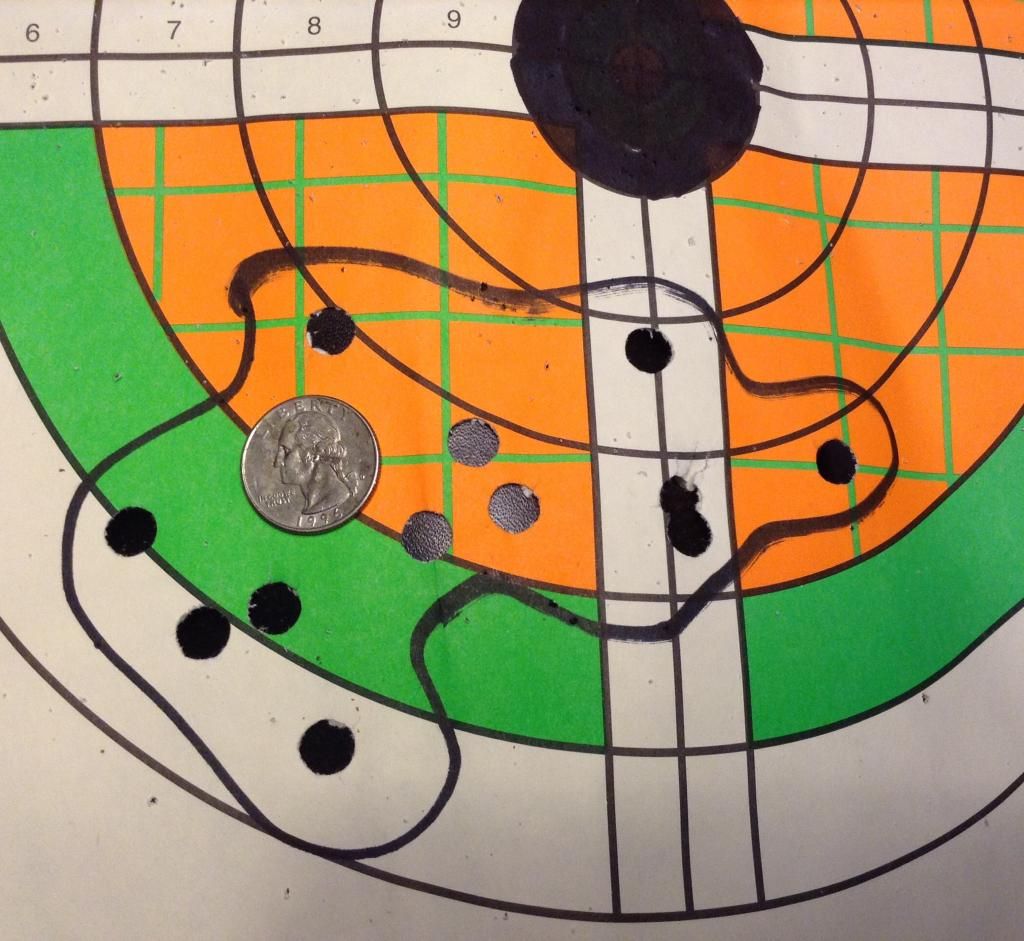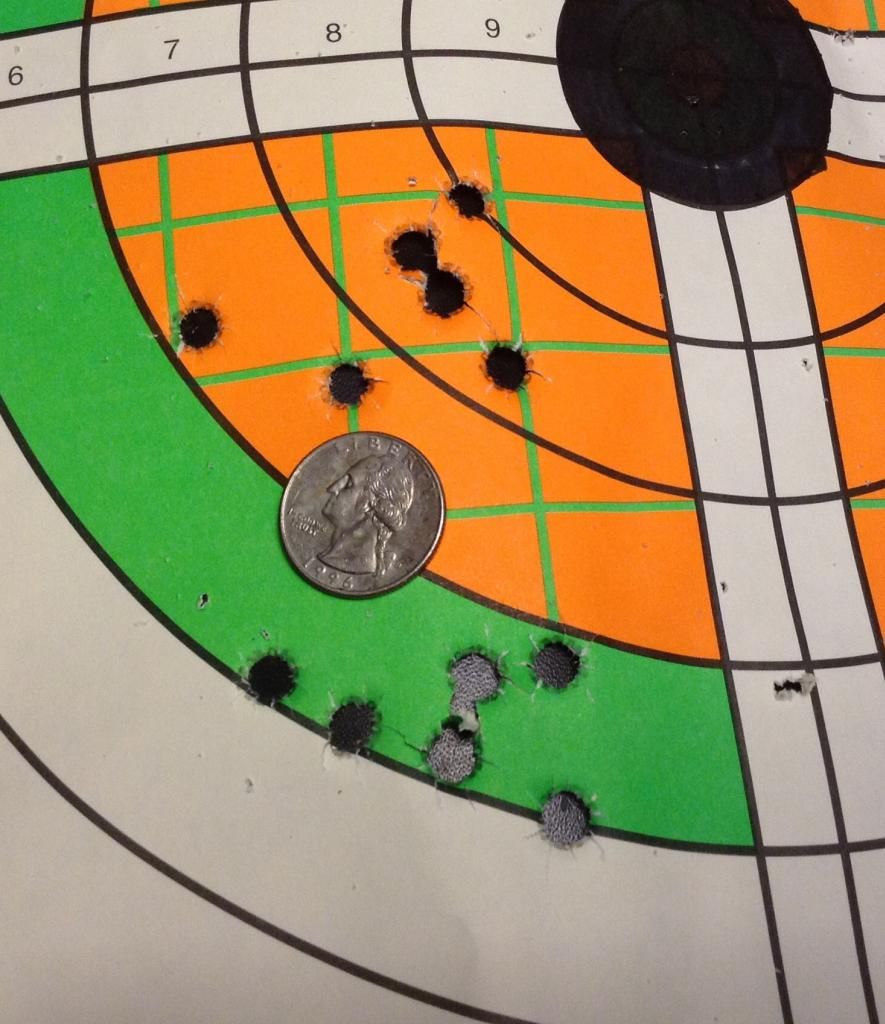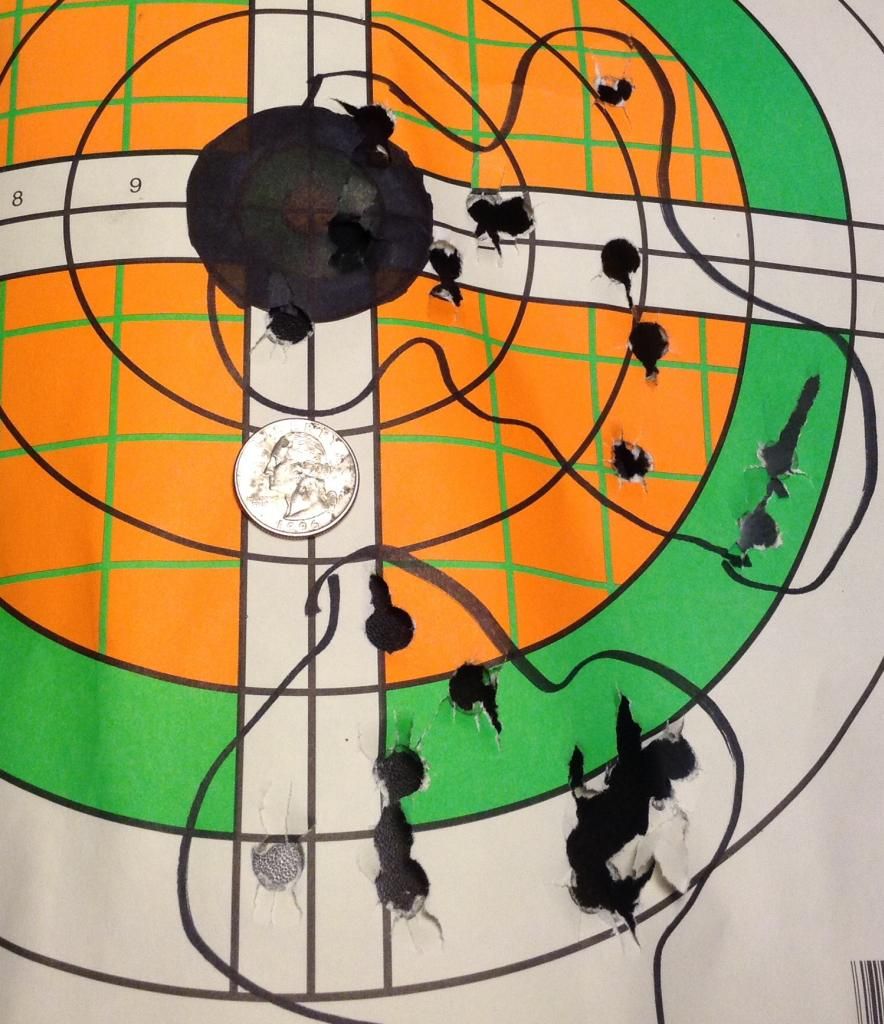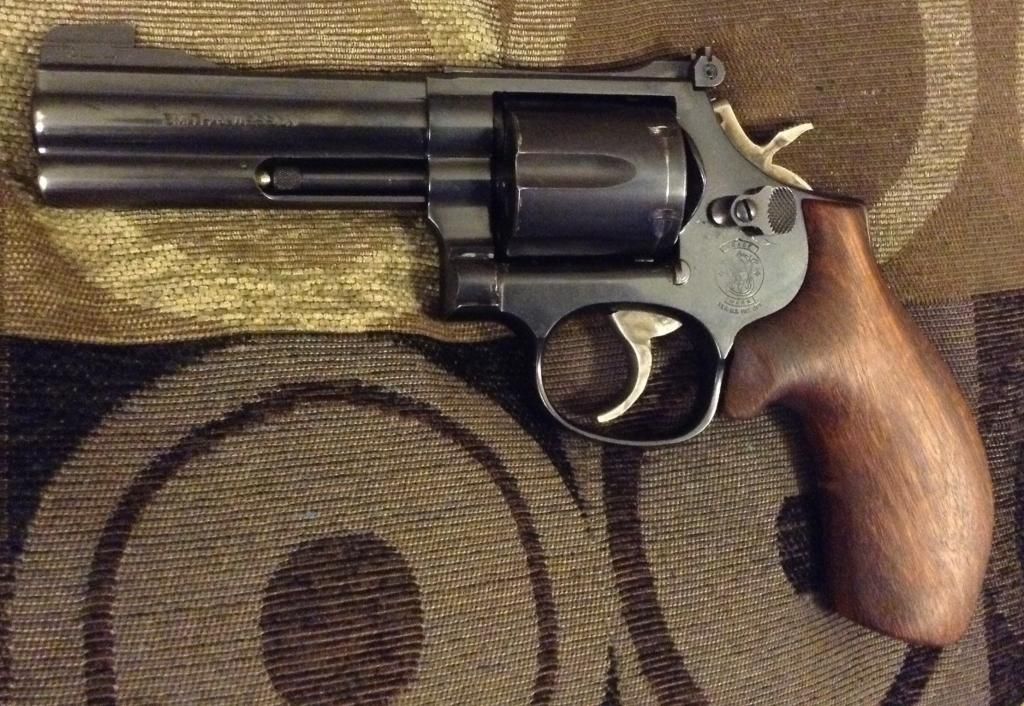Safestuffer
New member
I have little experience with this, so far I've been lucky with my used gun purchases. I appreciate any advice from wiser people than myself
I have a 6 inch 586-2 that I love, and I have been looking for a decent 4 inch 586 shooter that is a bit easier to carry.
I found another 4" 586-2 that looked to be pretty much perfect for what I wanted.
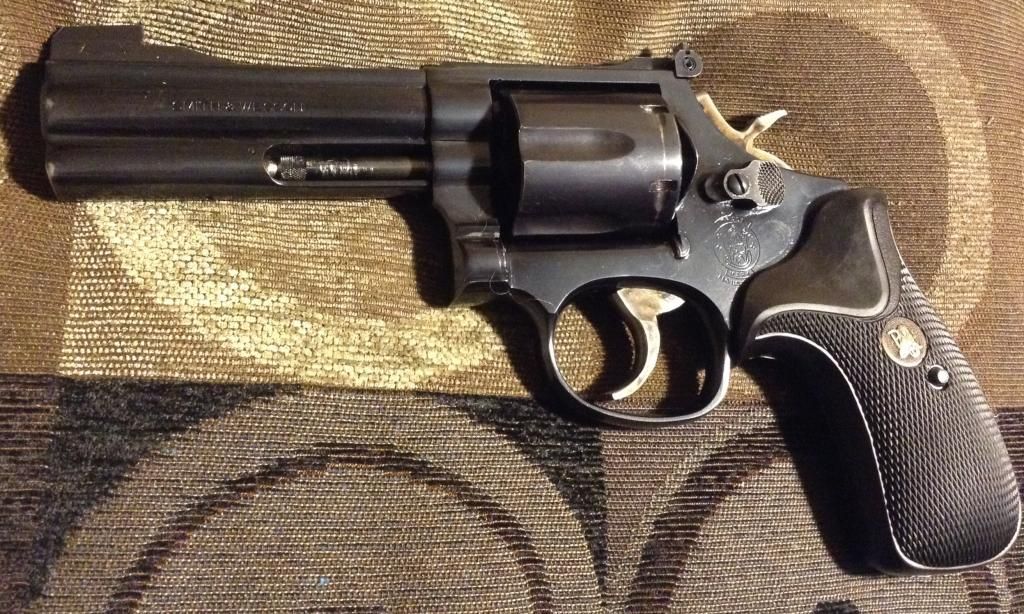
4 inch, round butt for my short little fingers, and I even like the front sight modification. It looks to be in decent shape, certainly a shooter. It was an auction gun with pretty good pictures, and I got it for what I thought was a pretty good price considering the front sight, grips, and level of wear. The bore was described as "excellent".
Long story short, my FFL/LGS is on vacation and closed this month but I got lucky when the gun came in while the manager was in doing paperwork so he called me and let me in to do the transfer the last 10 minutes he was there...so I didn't really have the time to do a lot of inspection. I checked and the gun locked up tight and functioned well. I was expecting the obvious flaws such as the scratched ejector rod and replacement dovetailed front sight.
I got home and gave it a better inspection and started getting depressed.
The first thing I noticed was this.

Ugh. Is it just me or is that a lot of erosion on that forcing cone? I have a few .357 revolvers, some fairly heavily shot both by me and by the prior owners, and this is the first time I've seen this much damage.
Is it just me or is that a lot of erosion on that forcing cone? I have a few .357 revolvers, some fairly heavily shot both by me and by the prior owners, and this is the first time I've seen this much damage.
I turn the gun over and see this.
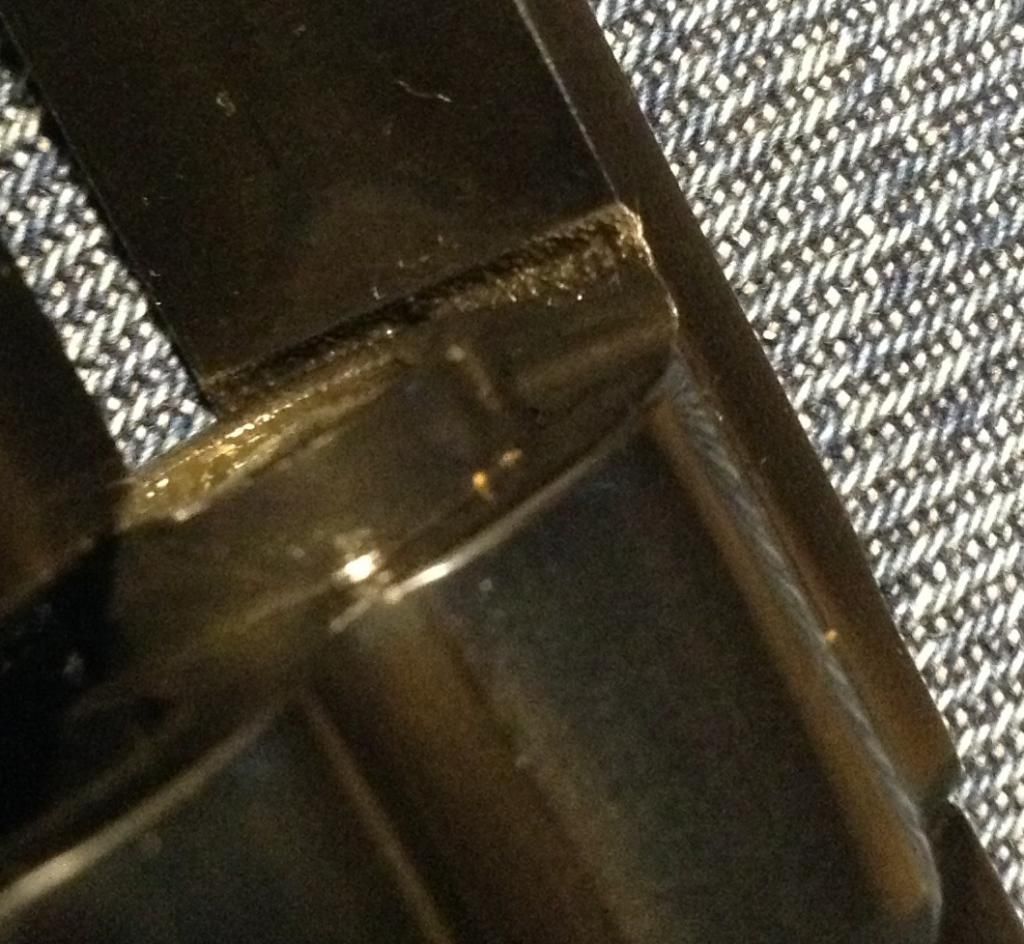
I mean...dang. I know that's just cosmetic, but Again, that's by far and above the worst flame cutting I've personally seen on a .357.
Again, that's by far and above the worst flame cutting I've personally seen on a .357.
Now mind you, the gun locks up find with no end shake and maybe just a bit more than normal side to side play, but I noticed when the cylinder is open it has far more back and forth slop than my other 586.
And here is the cylinder stud/stop on the newer 4 inch 586. It has been worn down to a ramp and allows for a lot of play in the cylinder when open.
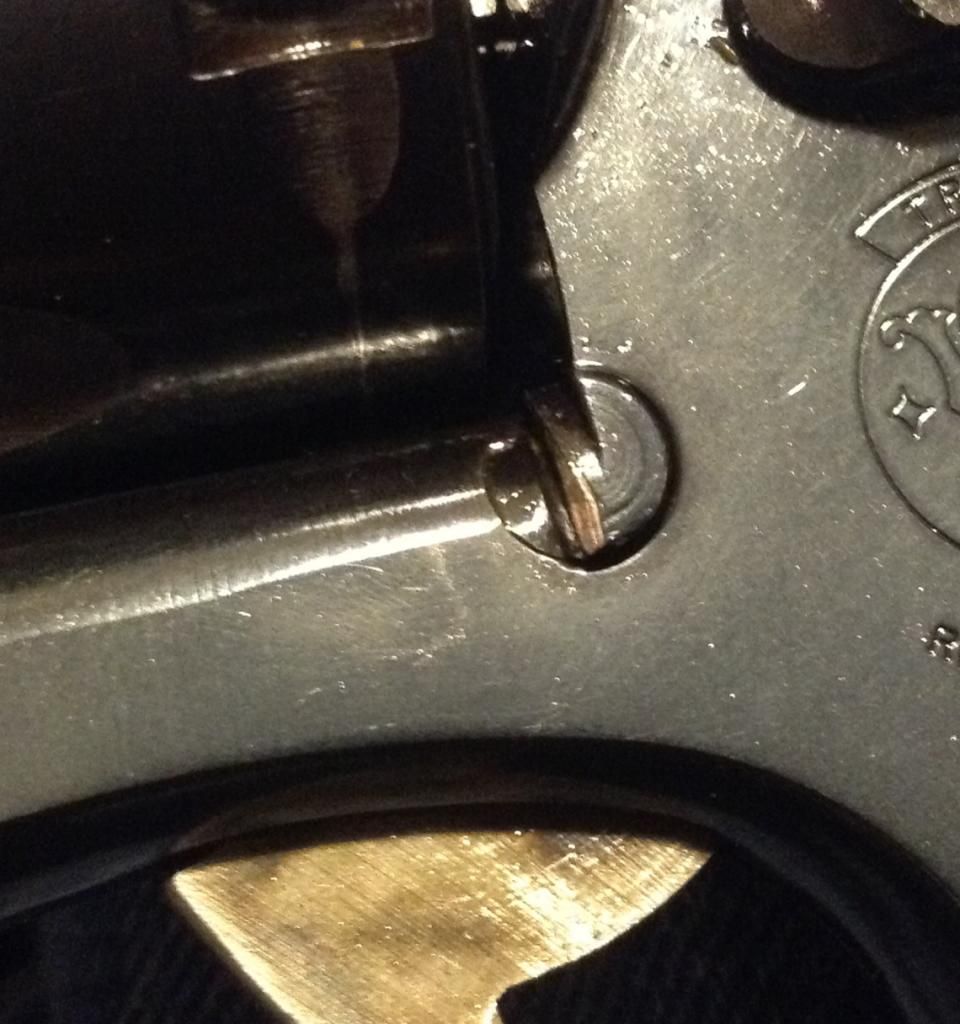
I can't get a picture, but when I look down the bore, the first inch or two of rifling past the forcing cone definitely looks to have rounded edges compared to the rest, and the first half inch or so looks kind of wavy like it is heavily and irregularly worn.
Oh, and it has the "M" stamp for the recall...but its a 586-2...so I thought by the -2 the problem had been fixed, so why would S&W need to do the work on it?
So...what do you all think? Is this thing worn in, or clapped out?
I have yet to shoot it, but at this point I'm thinking that if it needs a new barrel and work on the cylinder stop I'm better off not shooting it so when my FFL opens again in July I can maybe send it back for a refund.
I'm into it for $450, and IMO that's about $150 too much as it sits.
Sad...I actually really like this gun.
I have a 6 inch 586-2 that I love, and I have been looking for a decent 4 inch 586 shooter that is a bit easier to carry.
I found another 4" 586-2 that looked to be pretty much perfect for what I wanted.

4 inch, round butt for my short little fingers, and I even like the front sight modification. It looks to be in decent shape, certainly a shooter. It was an auction gun with pretty good pictures, and I got it for what I thought was a pretty good price considering the front sight, grips, and level of wear. The bore was described as "excellent".
Long story short, my FFL/LGS is on vacation and closed this month but I got lucky when the gun came in while the manager was in doing paperwork so he called me and let me in to do the transfer the last 10 minutes he was there...so I didn't really have the time to do a lot of inspection. I checked and the gun locked up tight and functioned well. I was expecting the obvious flaws such as the scratched ejector rod and replacement dovetailed front sight.
I got home and gave it a better inspection and started getting depressed.
The first thing I noticed was this.

Ugh.
I turn the gun over and see this.

I mean...dang. I know that's just cosmetic, but
Now mind you, the gun locks up find with no end shake and maybe just a bit more than normal side to side play, but I noticed when the cylinder is open it has far more back and forth slop than my other 586.
And here is the cylinder stud/stop on the newer 4 inch 586. It has been worn down to a ramp and allows for a lot of play in the cylinder when open.

I can't get a picture, but when I look down the bore, the first inch or two of rifling past the forcing cone definitely looks to have rounded edges compared to the rest, and the first half inch or so looks kind of wavy like it is heavily and irregularly worn.
Oh, and it has the "M" stamp for the recall...but its a 586-2...so I thought by the -2 the problem had been fixed, so why would S&W need to do the work on it?
So...what do you all think? Is this thing worn in, or clapped out?
I have yet to shoot it, but at this point I'm thinking that if it needs a new barrel and work on the cylinder stop I'm better off not shooting it so when my FFL opens again in July I can maybe send it back for a refund.
I'm into it for $450, and IMO that's about $150 too much as it sits.
Sad...I actually really like this gun.
Last edited:

